Interpol's drum setup in pictures
Sam Fogarino talks Ludwig kit, playing live and click tracks
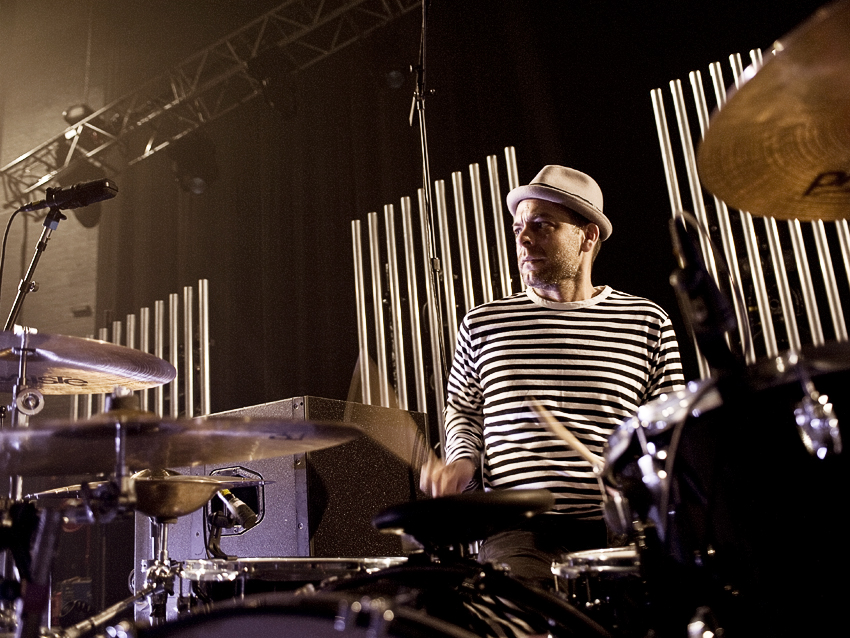
Sam Fogarino's drum kit in pictures
Bands come and bands go, and most of them sound pretty much the same. Not so with the New York quartet Interpol, though, whose angular, unpredictable music has made them the toast of the rock scene since the early 2000s.
Drummer Sam Fogarino, who has been with the band for over a decade, is that rare musician: someone who cares passionately not about image or fame, but about his music. And as you’ll learn, the way he delivers his drum parts is neither simple nor orthodox…
Rhythm caught up with Sam to talk gear, playing live and band dynamic, and - among the shots of Sam’s kit you’ll see in this gallery - are snippets from that interview.
- Find your next setup with our guide to the best drum kits
First up: a closer look at Sam’s noise-battling Ludwig Classic kit…
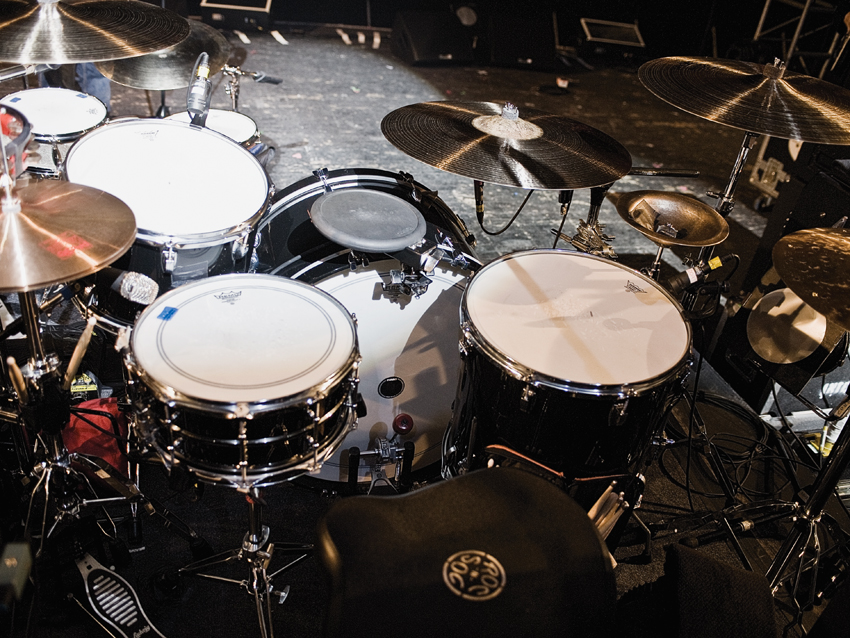
The kit
Your band has a unique sound, Sam. How do you contribute to this when you write drum parts?
"I like to keep the palette clean from outside influences. It’s a hard thing to try to come up with something unique and original. You find yourself trying to find a different way to play a four-to-the-floor beat. There’s a lot of that in Interpol. I find myself thinking, ‘Where can the accents fall? How can I invert this?’"
"I don’t want to just be the default drummer, and just do what I do because I have drum sticks in my hand. It doesn’t have to be approached that way. Drums are a very viable instrument, and very important within the context of what we do."
Next: kick drum
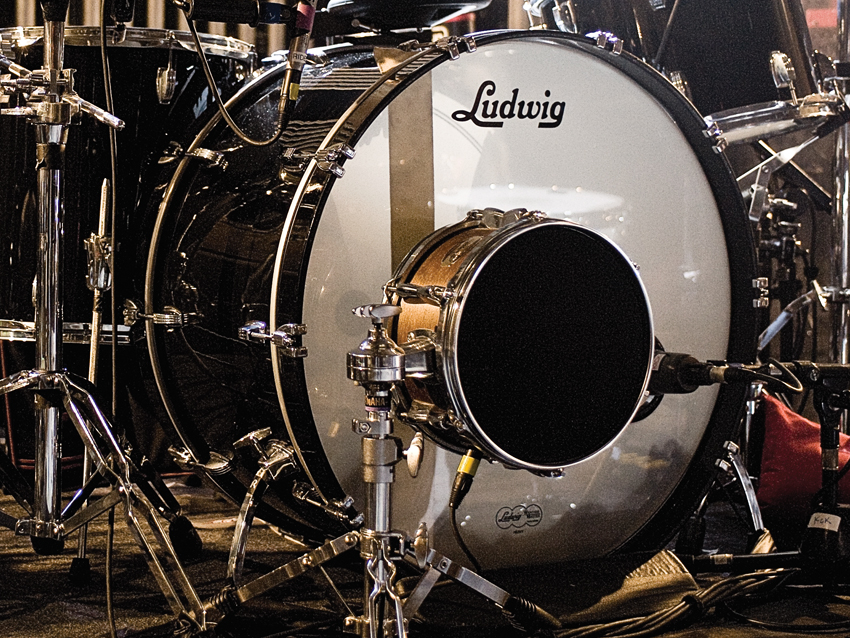
Kick drum
What are the unique features of your kit and your drumming?
"Well, I never thought I’d go as big as a 26" kick drum! They do lack snap at that size, and I had to play around with a lot of different beaters and different heads, because they can be really dark. The volume’s great, though, especially with Interpol - which has heavy keyboards and very loud guitars covering a full frequency range. That’s a lot to battle."
Next: snares
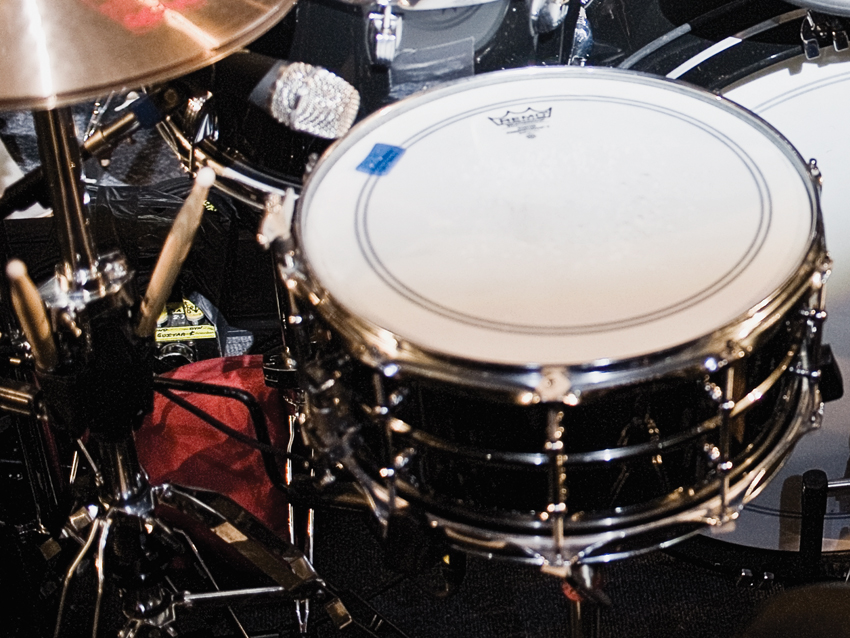
Snares
"Also, I switch between snare drums, depending on the room. Like the kick drum, my chrome-on-brass snare is pretty clunky and heavy, and sometimes it eats up the ghost notes. Between that and my Black Beauty, the two snares can take care of pretty much any room.
"I usually decide which one to use, but my tech has been with me so long that he knows what to do. It’s Bobby Schayer, who was the drummer for Bad Religion until 2001 [until he retired with a shoulder injury]."
Next: cymbals
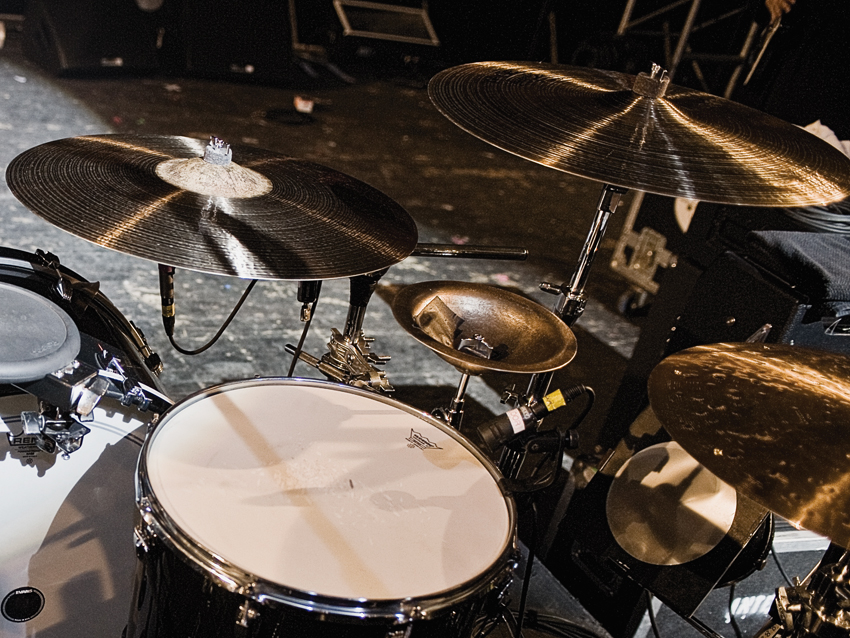
Cymbals
"I also have a 21" ride cymbal with eight rivets in it: it’s an odd size and I crash on it in more delicate parts of the songs. If I was a good jazz drummer, that would be the one, because it has that beautiful ‘ting’ with the wash that just billows out underneath, and the rivets are beautiful and old-school."
Next: sticks and tuning
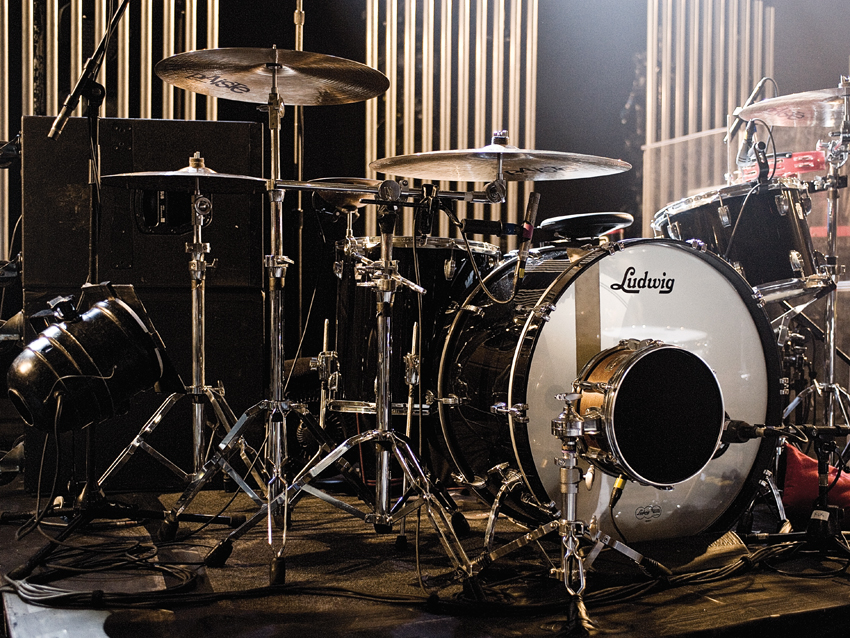
Sticks and tuning
"As for what’s unique about my style, sometimes I reverse my sticks when I’m playing. It helps achieve a bigger sound, especially on the snare and toms. And when it comes to tuning the drums, I try to keep them open, with an even resonance going on.
"I like them on the tight side, especially the toms, with an even oscillation or lower - especially on the bottom head."
Next: recreating drum parts live
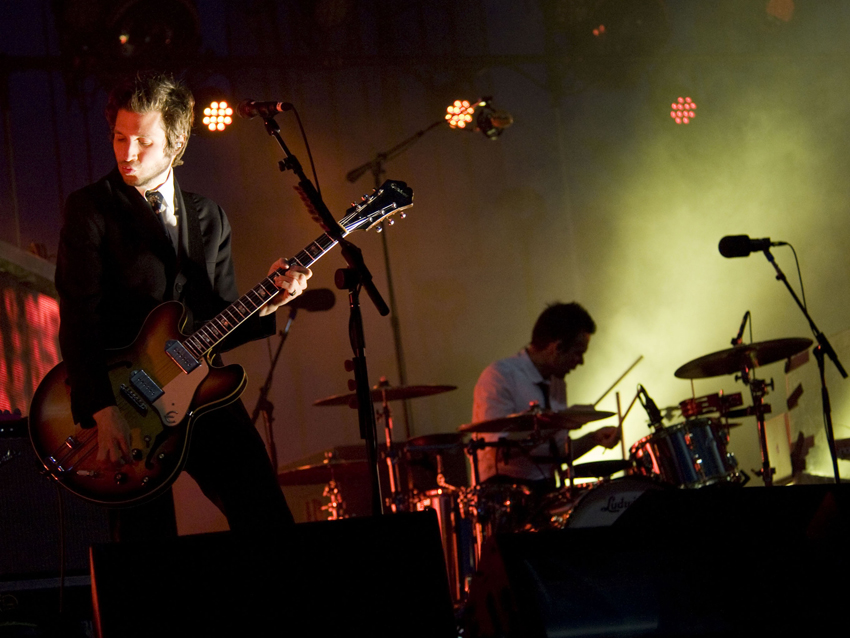
Recreating drum parts live
How do you recreate your drum parts live?
"It depends on the song. Some songs are fine the way they are: they convey what needs to be conveyed. Sometimes I’ll actually play less, I find I’ll strip it back more in the live arena and I’ll omit certain fills. On the other hand, if the atmosphere is right I’ll throw in a big fill here and there.
"Sometimes it develops over the course of a tour: you get to know a song so well that you find yourself playing it differently, or changing it somehow."
Next: songwriting
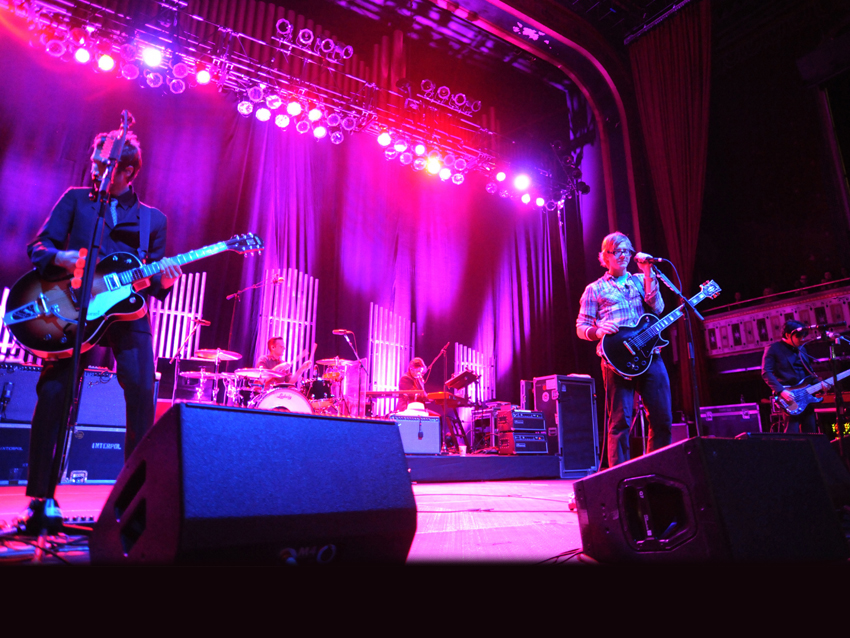
Songwriting
How does your band write songs?
"Daniel [Kessler, Interpol guitar player] comes in with a well-formed idea, and then we all get into the room - and the song isn’t complete until we’re all happy. So in that sense, we write as a band, especially when it comes to arranging. It’s a blast, and it’s also a nightmare. I’m pulled in at an early point, so I have a sense of satisfaction.
"With quite a few Interpol songs, it was the beat that pulled them into a new direction and determined that a certain way was where they needed to go. There’s a lot of room for that."
Next: Interpol’s live show
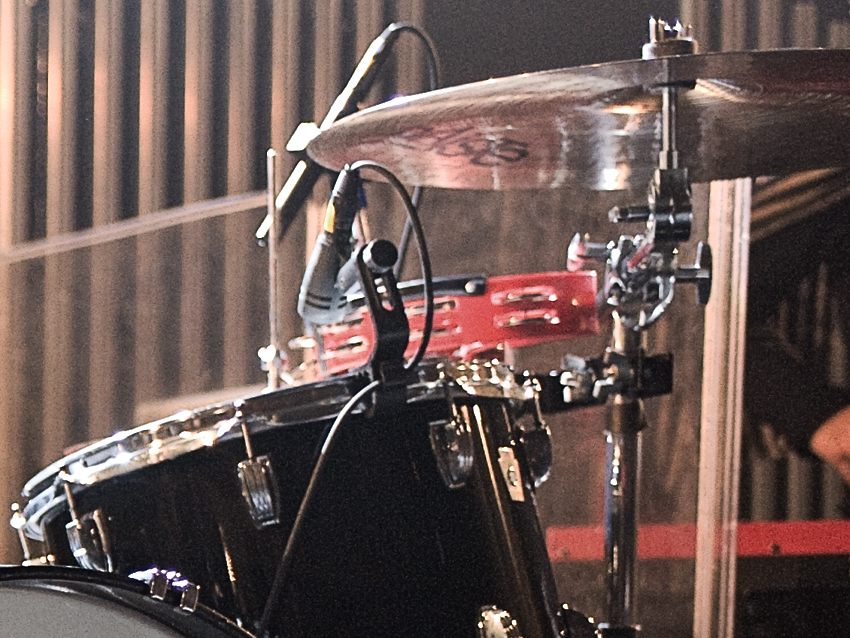
Interpol's live show
How do you approach Interpol’s live show?
"Well, I did a lot of overdubbing on the new record, adding new hi-hat and tambourine parts in order to build a texture. So when it came to playing live, I found myself compensating, because I only have two hands: I asked myself what were the primary voices that could be heard and felt.
"There’s a song called Lights on the new album which has no snare at all, but it has some percussive programming which alternates 16ths between the hi-hat and ride, and then I started adding some floor tom on the one and three. That kinda fills the room."
Next: playing to the click
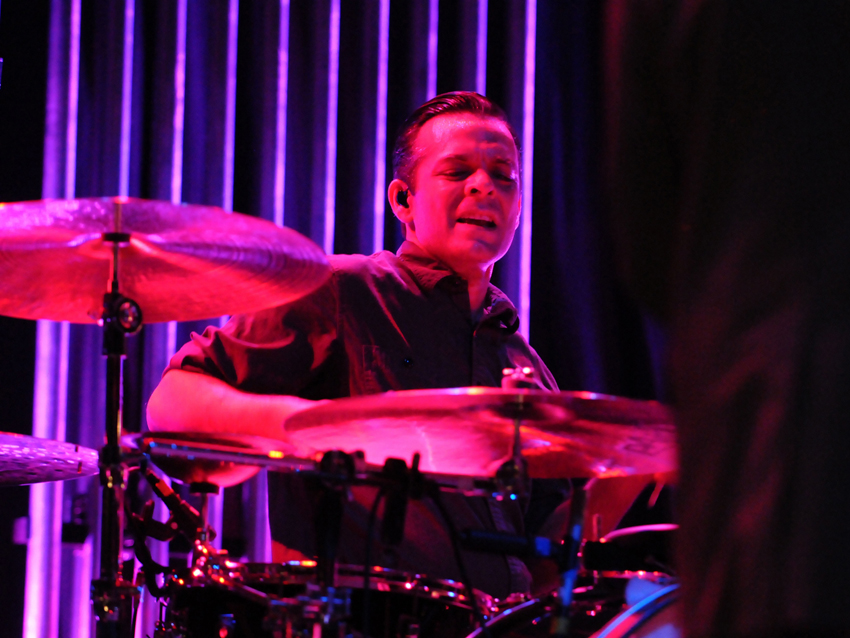
Playing to the click
Do you find click-tracks useful?
"I do think it’s useful for a drummer to have a click or a metronome in their pocket in case they need it, although I was definitely afraid of them for years!
"They were intimidating, because I was afraid of not being able to lock in to the click, and that people would think I was a poor drummer. But I finally conquered it, and half the songs played in an Interpol set are on click and half are not. Both have their merits.
"Some kid might be in an out-and-out punk rock band, and a click might not be necessary, because dips and valleys in the tempo are good. Look at John Bonham: that was all feeling, but I guarantee you that he had to nail it down on a click track. I just think it’s a good thing to have.
"How you go about it is up to you: in this day and age it doesn’t have to be a click noise, you can program in a little percussion part to send you the beat. Then it becomes like a percussionist that you’re playing with."
Next: live clicks
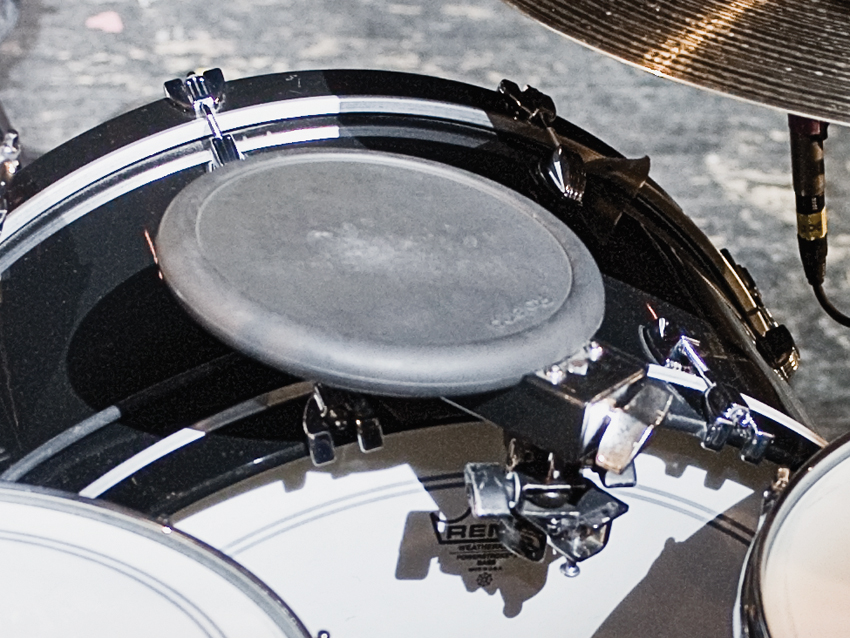
Live clicks
How do you manage the clicks when you’re playing live?
"I feed a click manually through a Roland pad, and that triggers a rimshot sound out of an Akai MPC. This goes to everybody else in the band during certain songs. That way I don’t have to do an introductory count-in with the sticks in front of the audience, and ruin it all.
"A little hi-hat is kinda cool, but sometimes it’s not about percussion, it’s about melody and harmony, so I just click the band in."
Next: in the studio
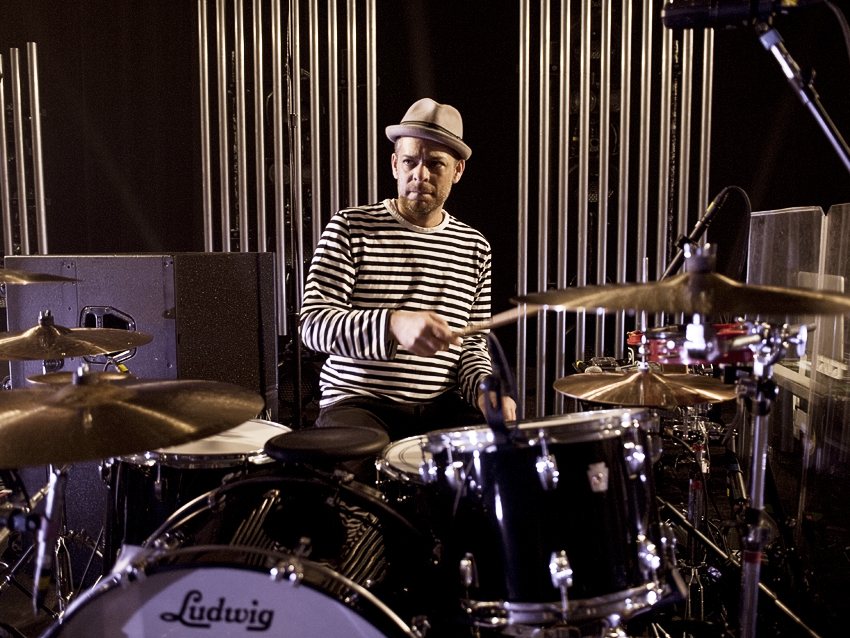
In the studio
How do you approach the studio?
"I have a strong work ethic: I never want to say, ‘Oh, f**k it,’ know what I mean? Even when I’m at my most tired, I can’t do it. I’m a perfectionist at what I do. I don’t like making minor mistakes, and I don’t like happy accidents any more. I used to love them, but now if I go to program something I have to beat my head against the wall until it’s perfect."
Next: practicing and rehearsing
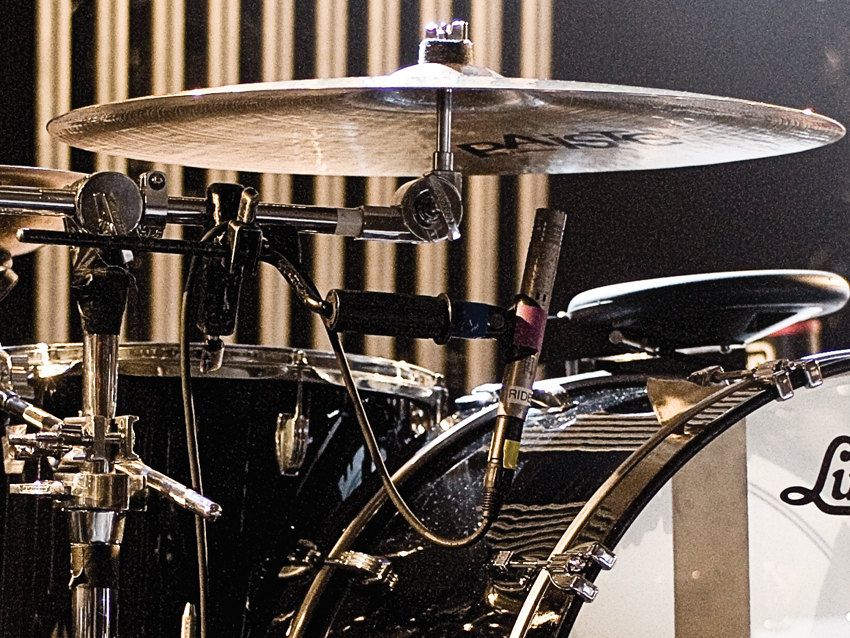
Practicing and rehearsing
Doesn’t that remove the element of spontaneity from the music?
"I like spontaneity too. That’s what keeps a good balance. I do like sitting behind a kit without a thought about what’s going to happen. The perfectionist in me kicks in when I have an idea, and I go to execute it. But I do love spontaneity, because some of the best ideas are born that way.
"Any time I go to practise or rehearse, I have at least two mics going to capture the moment. Maybe I’ll sample it, maybe I’ll save it for later."
Liked this? Now read: Drum kits of the pros: stars' live and studio drum setups in pictures
Connect with MusicRadar: via Twitter, Facebook and YouTube
Get MusicRadar straight to your inbox: Sign up for the free weekly newsletter